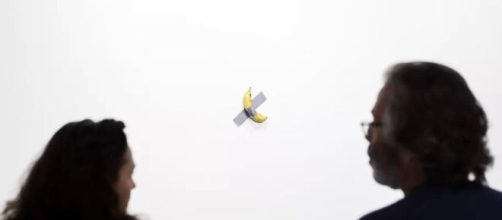Don’t artists read art history anymore? How else to explain Joe Morford's claim that Maurizio Cattelan stole his idea by duct-taping a banana to the wall of Art Basil Miami in 2019.
If he knew history, Morford would know that since ancient times when the Romans borrowed from the Greeks, artists have been lifting from each other routinely to perfect their skills.
Picasso broke the custom down this way: “Good artists copy; great artists steal.” (More about this in a moment).
Morford’s lawsuit said that in 2000, he duct-taped a banana and orange to a wall and later posted it on his Facebook and YouTube accounts.
He assumed that’s where Cattelan saw it; although he had no evidence that he did. Yet, a federal judge in the Southern District of Florida found that Morford "sufficiently alleges a similarity."
I don’t expect a judge to know art history. He was simply following the copyright law of 1976 that said you not only can’t copy, but you also can’t do anything even based on another’s work. Unless the work is dated before 1927 and in Public Domain.
Age of litigation redux
Another artist also sued Cattelan this month, though not for cadging his work. French sculptor Daniel Druet claimed that he wasn’t credited for producing the work that made Cattelan a celebrity.
But his suit is even sillier than Morford’s because Cattelan hired him to produce the work and paid him for it?
Clearly, we live in an age of litigation. Prior to this time, artists borrowed from one another all the time.
Consider Van Gogh whose painting “The Sower” imitated Francois Millet's painting of the same name. He copied it many times, eventually adding the figure of the sower and his own color scheme. But always, he said, it was Millet’s painting that inspired him.
Van Gogh was upfront about his other borrowings, too. His painting “Bridge in the Rain,” duplicated Hiroshige’s “Evening Shower at Atake and the Great Bridge,” telling his brother Theo, “All my work is based to some extent on Japanese art.’’
How much copying went on in the past? It happened so often that there were times when artists copied from other artists’ copies.
Paul Gaugin’s “Spirit of the Dead Walking” was adopted from Édouard Manet’s “Olympia” which, in turn, was taken from Titian’s “Venus of Urbino.”
Tracing vs. copying
At least those who copied did it free-hand. But to get his imitation exact, Pop artist Roy Lichtenstein traced onto his canvas what an opaque projector reflected and enlarged.
Given all the time Lichtenstein bummed from other artists’ work – mostly from cartoonists of the Sunday comics – you’d think lawsuits would have dogged him. He was plainly born too soon.
In this age of litigation, we have moved from trying to grasp the meaning of art to just plain grasping. And I fault the press. When an art story is reported, it’s not about art, it’s about money - how much it sold for.
This doesn’t happen in other areas of the news. When a crime is committed, law enforcement is sought for comment. When it’s a medical story, physicians are a source of information. When an art story makes the news, why aren't connoisseurs sought out?
After Van Gogh's "Portrait of Dr. Gachet" sold for $82.5 million, Henry Mitchell, a columnist for the Washington Post, opted to attack artists, saying, “They are as free as anybody else to sell a picture for millions. All they have to do is convince some idiot it's worth it.”
See? Not a word about the painting. Likely, this is why Cattalan’s duct-taped banana, which sold for $120,000, made such a hit with the public. It was obvious he was mocking an over-valued art world.


